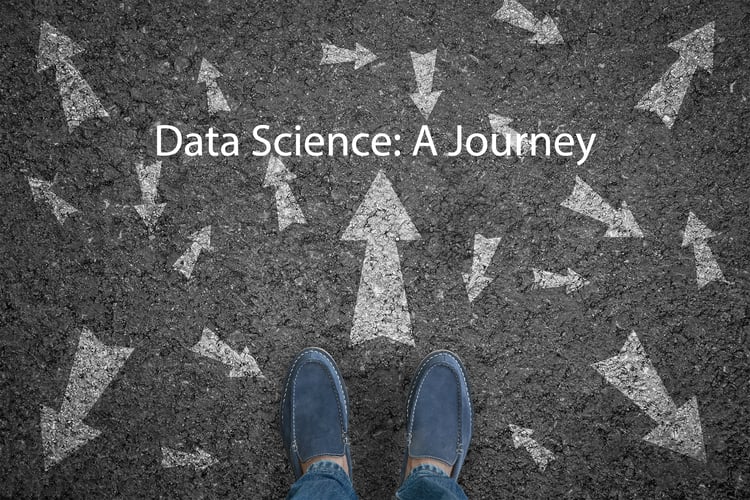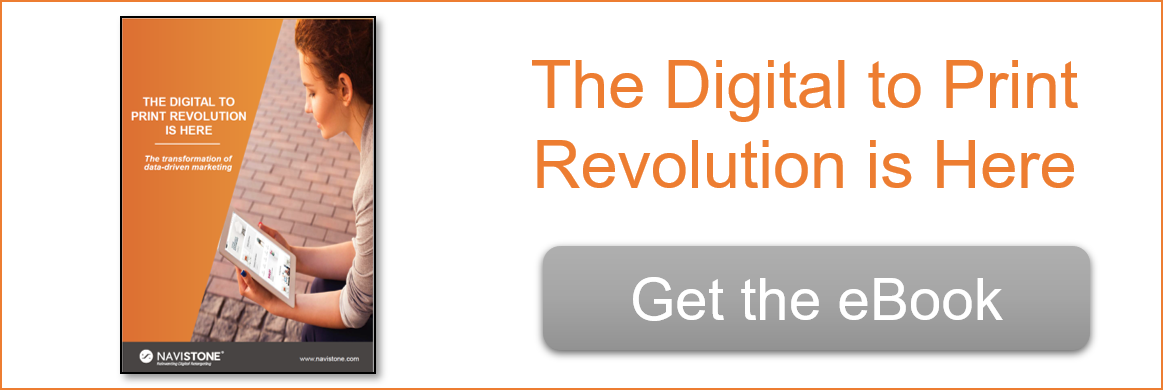This week's blog post is contributed by guest writer, Connie Vaughn, Director of Data Science for NaviStone. Connie has worked in data science and analytic...

Follow one Data Scientist through his winding journey in analytics. Dave Cameron joined the NaviStone team in January of 2020. He comes to NaviStone bringing over 25 years of experience in data science and predictive analytics in both the corporate and startup spaces.
Data Science: A Journey
I recently joined NaviStone as VP of Data Science. I’ve focused on consumer segmentation, targeting, and measurement through much of my career. The concept of starting with the catalyst of a website visit, then modeling that data to determine purchase intent is fascinating. So much of the world is focused on pageviews, yet for companies selling products, it is all about transforming those engaged browsers into responsive customers through the right marketing channel, web-powered direct mail. Using direct mail is less cluttered than traditional display or email. I have an 18-year old son who has over 6000 emails from various colleges enticing him to apply. The vast majority sit unread. Yet, he’s received a couple dozen print enticements in our physical mailbox, and he’s looked at nearly all of them. It is behavior like that which led me to NaviStone. I’d like to share some of the journey on how I got here, and what I learned about the state of Data Science today.
The formative time of my career was back from 2000-2004. I was brought in at Merkle to lead their new analytics team. Merkle was a small company then, with little brand equity or recognition with a visionary leader. They were doing $2MM run rate in analytics revenue. The vision was to replace demographic selects with statistically modeled selects and charge a premium. The idea worked so well, that the business increased tenfold to $20MM. My team went from having 2 analysts to having a team of 14; mostly applied statisticians. This taught me about the value of a great idea that could use my applied statistics expertise to bring to fruition.
From there, I went to Nielsen where I spent 12 years in various functions. Most of my time there was spent prototyping new offerings via statistical approaches. One example was personalizing mobile coupons. Our team used various data sources to optimize the coupons sent to customers of a particular retailer. The result was a 37% improvement in new product trial. Heady stuff! A lot of that work centered around consumer segmentation for marketing purposes. During that time, we expanded beyond classical statistical approaches to what would be called data science approaches today.
Yet… my time at Nielsen came to an end in May 2017. The company divested consumer segmentation to focus on the core business. The fit was no longer there; and it was time to move on. I loved the fact that I led prototyping of new products and looked for a role like that. It quickly became apparent that much of that innovative work happens in early stage companies. I worked as a full-time employee for an early stage company for 4 months in late 2017, yet the idea wasn’t quite ready for that next step for someone like me. I did the same thing in 2018 with a different early stage company. Fearing the “3 strikes, you’re out” issue, rather than plunge back in, I took 16 months to talk to people and learn what types of efforts were being done in my area of interest, doing a handful of short consulting stints in that time. In fact, my last consulting stint was with NaviStone. The time spent working on the project was enough for both me and the management team at NaviStone to realize that the time and place is right for me to join.
What I have learned along this journey is that Data Science is a term that is very popular these days, yet it doesn’t necessarily mean the same thing to everyone. There are some places that employ classical machine learning. In this case, the focus is around getting the right data so the machine can do its thing. Without that understanding of the input data, you can easily have “garbage in, garbage out”. Many companies I talked to were hiring PhDs focused on machine learning and AI – yet these people often weren’t focused on the business domain expertise or understanding the client, they were focused on the latest innovations in data science. Other companies I talked to were on the other end of the spectrum. They were hiring data visualization experts; people who could be wizards with tools like Tableau. Yet, these people could measure anything and did understand the client, but weren’t focused on the “why”. They were focused on presenting the best story of what happened. It was important to me to find something in-between. My career is based on understanding the business needs and the client goals then finding the right data, the right statistical approach, and the right story to both tell what happened and why.
As a result, I wanted a company where it would fit my aforementioned strengths and had a business plan like Merkle or Nielsen where I could contribute. I also realized that I have many years of experience, success stories, and failure stories and opted to give back by teaching data science part-time at a college. So, circling back, I’m a big proponent of people stepping back and determining their strengths and where they can play best, yet also finding a growing organization where those strengths translate into value.

